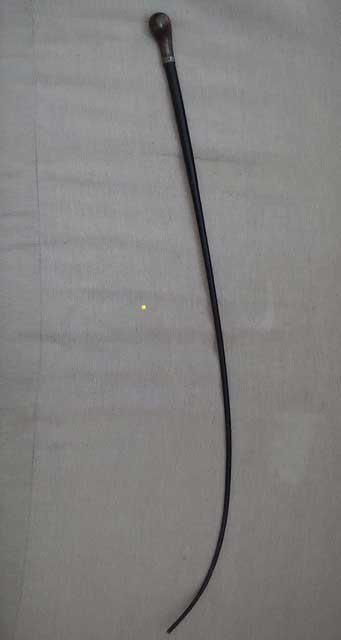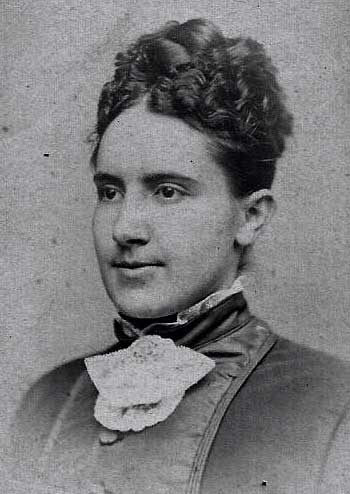February 2023
Vintage Discoveries
Riding crop recalls days when horses ruled the roads
by Ken Weyand
Antique Riding Crop
Nearly forgotten among the “family artifacts” packed away in our house was an ancient riding crop once used by my grandmother. At least that’s what my dad had told me when I asked him about the object many years ago.
The crop, once a fashionable accessory for the “complete equestrian,” is fashioned with a brass knob at one end that serves as a handle. Inserted into the knob’s base is a tapered black “crop,” appearing to be leather, or possibly leather tightly wrapped around a core of another material. From what research I’ve been able to do, this crop was designed for the female rider, and as such would be a bit on the rare side.
My ancestor’s riding crop measures about 31 inches in length. Unfortunately, it was once longer, with another piece of leather (two or three inches long) attached to the end, providing an extra “slap” when applied to the animal’s flank. The “extension” hasn’t survived, probably becoming detached when this writer first handled it as a youngster.

Old Riding Crop
Mary Miller (called “Molly,”), born in 1856, married Will Weyand, my grandfather, in 1880. Over the next 12 years hey had nine children. Eight survived and became orphans when both parents passed away. (Image courtesy of the author)

My Grandmother
Mary Miller (called “Molly,”), born in 1856, married Will Weyand, my grandfather, in 1880. Over the next 12 years hey had nine children. Eight survived and became orphans when both parents passed away. (Image courtesy of the author)
My grandmother, Molly Miller, was the youngest of 10, born in 1856 and raised on her family’s homestead near Granger in northeastern Missouri. My dad didn’t know when she had owned the riding crop, but her riding days probably ended in 1880, when she married my grandfather, Willie Weyand, and started a family that over a dozen years would include nine children, eight of whom survived to adulthood.
Although the couple operated a grocery on High Street that included a small stable with horses used for produce delivery, it’s more likely the riding crop had been used by Molly during her earlier days in rural Missouri when horsemanship was a necessary art. Assuming she had ridden horses as a young woman on the family’s homestead north of Granger, the crop could be nearly 150 years old.
My research has discovered a variety of riding crops and whips. Most have handles (frequently of bone, and occasionally silver) that could be used by the rider to open gates without dismounting. The jointed ends of the crops were sometimes fairly elaborate, some measuring several inches long and terminating with brush-like ends that could have been used to discourage horseflies.
I haven’t been able to locate a riding crop that closely resembles mine. However, one source showing a smaller but similar item referred to it as a “swagger stick,” probably used by the military, and traced it to the mid-1800s. Prices and descriptions of antique riding crops vary considerably, depending on age, condition, and materials used.
Ken Weyand is the original owner/publisher of Discover Vintage America, founded in July 1973 under the name of Discover North.
Ken Weyand can be contacted at kweyand1@kc.rr.com Ken is self-publishing a series of non-fiction E-books. Go to www.smashwords.com and enter Ken Weyand in the search box.

